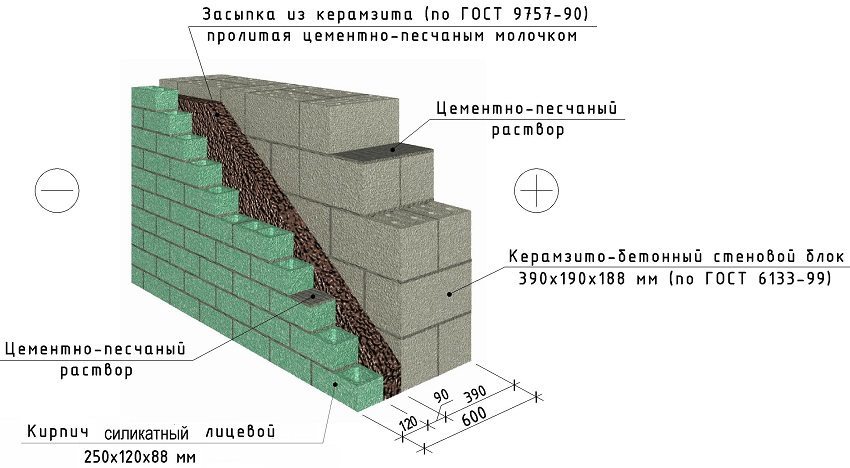Content
- Application
- Grid views
- Meshing technology
Leveling various surfaces with plasters ─ one of the popular ways to prepare walls and ceilings for painting or wallpapering. However, the plaster does not always lie smoothly, without defects. Some surfaces have low adhesion, so the solution applied to them begins to crumble and exfoliate. Particularly fast destruction of the protective and decorative layer is manifested on the facades of buildings, which are exposed to the negative effects of climate and moisture. Using a grid for wall plastering, it is possible to securely fix the mortar to the surface and improve the quality of the finish.

Application
The grid is used for external and internal works, and helps to achieve the following results:
- To increase the durability of decorative finishes due to the correct distribution of the load and reduce its impact by 1 m2. The mesh is point-fixed on the base, and with it, the weight of the solution is held.
- Avoid cracking of the plaster by reinforcing the surface layer. Walls and partitions made of blocks and bricks are prone to shrinkage and deformation. Reinforcing fabric gives the finish plasticity and prevents the appearance of cracks and other defects on the surface.

Grid views
For the manufacture of the mesh using different materials, which, along with other parameters, determine its type, characteristics and scope.
If a plaster thickness on the surface should be 30 mm or more, it is advisable to choose a metal mesh. It is used for rough finishing of walls with compositions containing cement or clay, and provides the strength of their connection to the surface due to additional fasteners:
- to metal base ─ by welding;
- to wooden ─ self-tapping screws;
- to a wall of brick or concrete blocks ─ dowels with a large washer.
USEFUL INFORMATION:How to make stucco molding on the wall with your own hands?
Depending on the manufacturing method and design features, a metal mesh can be:
- Woven. It has a mesh size of 1 × 1 cm2 and is woven from a thin and durable wire with different cross sections, most often galvanized. It is produced in the form of rolls and is used as a reinforcing layer for plastering external walls.

- Chain link. It is made of low-carbon steel wire by weaving and is a canvas with square or diamond-shaped cells and a size of 20 × 20 mm2. To protect against the effects of moisture and aggressive substances, the grid is covered with a layer of zinc or polymer. The chain-link is used to work on surfaces of a large area, including wooden or brick.

- Welded. It is made of steel wire, which is laid at right angles to each other, and then fixed at the junction using spot welding. The result is a solid mesh with square cells of different sizes. It is used to strengthen the plaster with strong shrinkage of the walls, which is important for finishing new buildings or houses located in unstable soil.

- Expanded. It is a sheet material with diamond-shaped cells and is intended for wall reinforcement with a small consumption of plaster. Expanded metal is made by cutting holes of the same shape and size on a sheet of metal, which is then stretched and converted into a grid for plastering.

If it is necessary to apply the solution as thinly as possible, it is advisable to use a plastic or fiberglass mesh.
- Fiberglass. Indispensable for finishing ceilings, facades and walls in the presence of recesses, grooves and depressions on their surface. It is lightweight, durable and resistant to temperature changes, and can be used for facades. The fiberglass mesh is not susceptible to moisture, so it is used to reinforce the roof and plaster of bathrooms and pools.
USEFUL INFORMATION:DIY wall alignment technology for do-it-yourself painting (video)

- Polymer mesh. It is produced by extrusion from polymeric raw materials, in which polypropylene is most often used. Using molding machines, the molten plastic is converted into a mesh web, the mesh size of which is determined by the modification of the material. Plastic mesh is used for plastering on the surface of facades and internal partitions. Since over time a mixture of sand and cement destroys the polymer web, it is advisable to use for decoration gypsum-based mixtures. A mesh with 2 × 2 mm2 cells is indispensable for applying finishing putty.

Meshing technology
For finishing work, several types of plaster mixes are used, which differ in composition, nuances of application and the degree of impact on various materials. In addition, when choosing a grid, you should consider:
- thickness of the applied layer;
- base material;
- conditions for the completion and operation of the coating.
Metal
When choosing a metal mesh for reinforcement, galvanized should be preferred: it prevents the appearance of corrosion and prevents the appearance of rust spots on the walls. In addition, it is easy to cut and quite simple to fix on the surface. Before work, the metal mesh should be degreased, and galvanized ─ just rinse with water. The formation of the reinforcing layer is as follows:

- Using scissors for metal, a grid is cut into individual paintings, the size of which depends on the orientation of the material on the surface. In the presence of rusts, a reinforcing layer for plaster is placed along each seam with a solid canvas.
- Drill holes with a diameter of 6 mm using a hammer drill. Their depth should exceed the length of the dowel by 2-3 mm, and the pitch should be 25-30 cm.
- Insert dowels into the holes obtained, and then fix the grid on the surface of the walls with the help of mounting tape and screws. For reliable fixation, the web is overlapped, with approaching each other by about 10 mm.
- Beacons are installed, and the first layer of plaster is thrown using a trowel. In this case, the solution must be pressed in such a way that it passes through the reinforcing sheet and is fixed on the surface. After that, the finish layer is evenly distributed over the surface of the wall or ceiling.
- The second layer of plaster is applied by drying the first. If the basis is a facade with insulation, it is advisable to use a chain-link for reinforcing the surface. It is also necessary for the decoration of wooden walls.
USEFUL INFORMATION:Plastering walls of aerated concrete: technology of applying to walls indoors

Plastic
If necessary, protect the plaster from cracking using a plastic mesh. It is especially in demand in those cases of interior decoration, when shrinkage of the base is possible. The algorithm of actions is as follows:
- prepare the base, and with the help of a trowel put a layer of plaster on it;
- impose a cloth on top of the solution and smooth in such a way that the mixture protrudes from the cells;
- smooth the plastic mesh with a spatula, and if necessary, apply a second layer.
Separate parts of the canvas are placed on the wall with an overlap.
Fiberglass mesh

It is fixed on a wall of brick or concrete blocks with a layer of plaster. If desired, you can fix the grid in several places with screws. Fiberglass is attached to wooden surfaces using a construction stapler.

EXPERT SITE
Tsugunov Anton Valerevich
Master Station Wagon
- Since 2003, I have been engaged in the repair and decoration of premises.
- Over 100 completed objects.
- I appreciate the quality, more than the quantity!
Personal page >>>
Friends!
I offer you the service "Friend Builder"
As this site develops, subscribers and visitors are turning to me more and more often asking for help with advice on various issues of repair and decoration.
Questions are sometimes asked very complex and interesting. You can’t write an article for each situation, so I decided to advise you individually.
Thanks to you, friends, a new direction of my favorite work has been born - share your experience and benefit everyone who is undergoing repairs!
Get a one-time consultation from me >>>
Order full apartment repair support >>>


